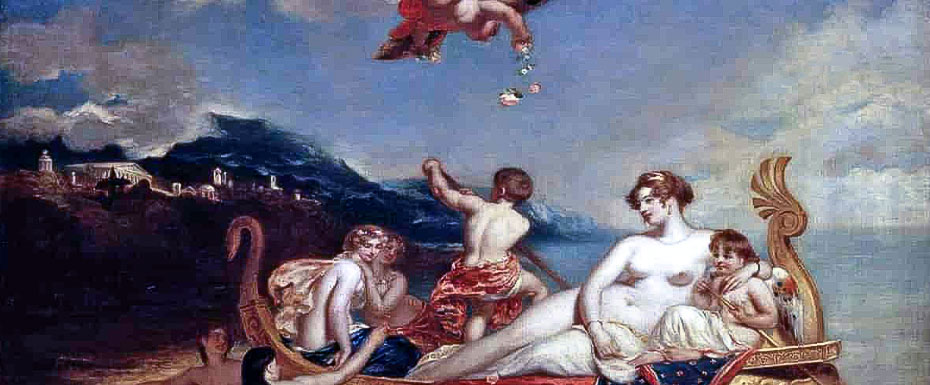
The presence of muses and harmonious (and sometimes not very) relationships with them have become the driving force in the life and creative career of many world-famous artists. If it weren’t for them, most probably, we would not have admired today the rich heritage of the artists that will be discussed in this article.
Pablo Picasso and His Many Muses

Pablo Picasso could probably boast of the largest number of muses in his career – well, the main thing is that it only benefited his work. At the dawn of his formation as an artist, for twelve years, he lived with the servant Fernanda, the prototype of which can be seen on and “Girl on the Ball”; then he traveled for two years with Marcelle Humbert, who is depicted in one of the most famous paintings by Picasso, the painting “I love Eva”. The third companion of Picasso’s life, Olga Khokhlova, even managed to conclude a marriage contract with him. The artist had a freedom-loving nature, and even after the ballerina gave birth to his son, they did not manage to get along together. However, they did not divorce for a long time; otherwise, half of all Picasso’s property, including his paintings, would have to pass into the possession of Khokhlova.
Further relations of the artist were more and more turbulent. Picasso’s new romantic interest, 17-year-old Maria-Teresa Walter, gave birth to his daughter shortly after they met. But the artist very quickly cooled down to his young passion – trying in vain to revive the artist’s feelings, the girl committed suicide after a while. All subsequent serious lovers of Picasso were several decades younger than him. His last wife, Jacqueline Roque, lived with him for twenty years and also committed suicide a few years after the death of Picasso.
Gustav Klimt, Emilia, and Adele

Austrian artist Gustav Klimt also had women as one of his sources of inspiration. His canvases are now worth incredible money, and among them, it is worth highlighting “The Kiss” and “Golden Adele”. If we talk about the first of them, researchers believe that we can see on the canvas the artist himself and Emilia Flöge, who met the artist at a very young age and maintained a romantic relationship with him for more than two decades. The woman was a modeler and owned a fashion house; therefore, she also often supplied other Klimt models with outfits. In addition to the mysterious Kiss, the artist dedicated a portrait to Emilia Flöge in 1902.
An equally interesting story has developed with the second picture, Golden Adele. This portrait can be called one of the best examples of Art Nouveau. It depicts Adele Bloch Bauer, who at the time of the show was married to a wealthy businessman Ferdinand Bloch-Bauer. After finding out about the affair between his wife and the artist, he decided to destroy the passion between them in a very interesting way, having signed a contract with Klimt for 100 sketches of Adele. Spending a lot of time with a young woman at work, Klimt got fed up with communicating with her and found a new muse. This method probably helped Ferdinand’s plan to come true, but Adele herself lived a short life.
Salvador Dali and Gala

The genius of surrealism, Salvador Dali was, unlike many of his artistic colleagues, not so many-loving when it came to muses. Already at the age of 25, he met his only wife and muse, Gala Eluard, a Russian of origin. Gala inspired Dali not so much with her outstanding appearance as her excellent managerial skills
– she was 10 years older and knew how to make new acquaintances and useful contacts to promote her husband. It is interesting that Gala was far from being an exemplary and faithful wife both to her first husband, after whose death she married Dali, and to Dali himself. But this did not stop him from buying a big castle for the love of his life in gratitude for her help (where she let the artist in only by special invitation) and loving her for the rest of his life.
Sandro Botticelli and Simonetta Vespucci
One of the most famous representatives of the Renaissance, Sandro Botticelli, created such masterpieces as the Portrait of a Young Woman and The Birth of Venus. The artist’s muse, with whom he was believed to have a platonic relationship, was Simonetta Vespucci, an incredibly popular young woman in 15th century Florence. She died at only 23 due to tuberculosis, and therefore Botticelli continued to paint inspired by her appearance after her death. You should not be surprised at that fact – young Simonetta was considered so beautiful and at the same time pleasant in communication that the most influential people in Italy fought for her attention. Simonetta’s beauty was also immortalized in The Virgin and Child with Saint John and an Angel.
Well, rarely does the relationship between such creative and freedom-loving people as artists and their women have a happy end. However, the cultural mark they left and the stories of their muses will live on for centuries.





